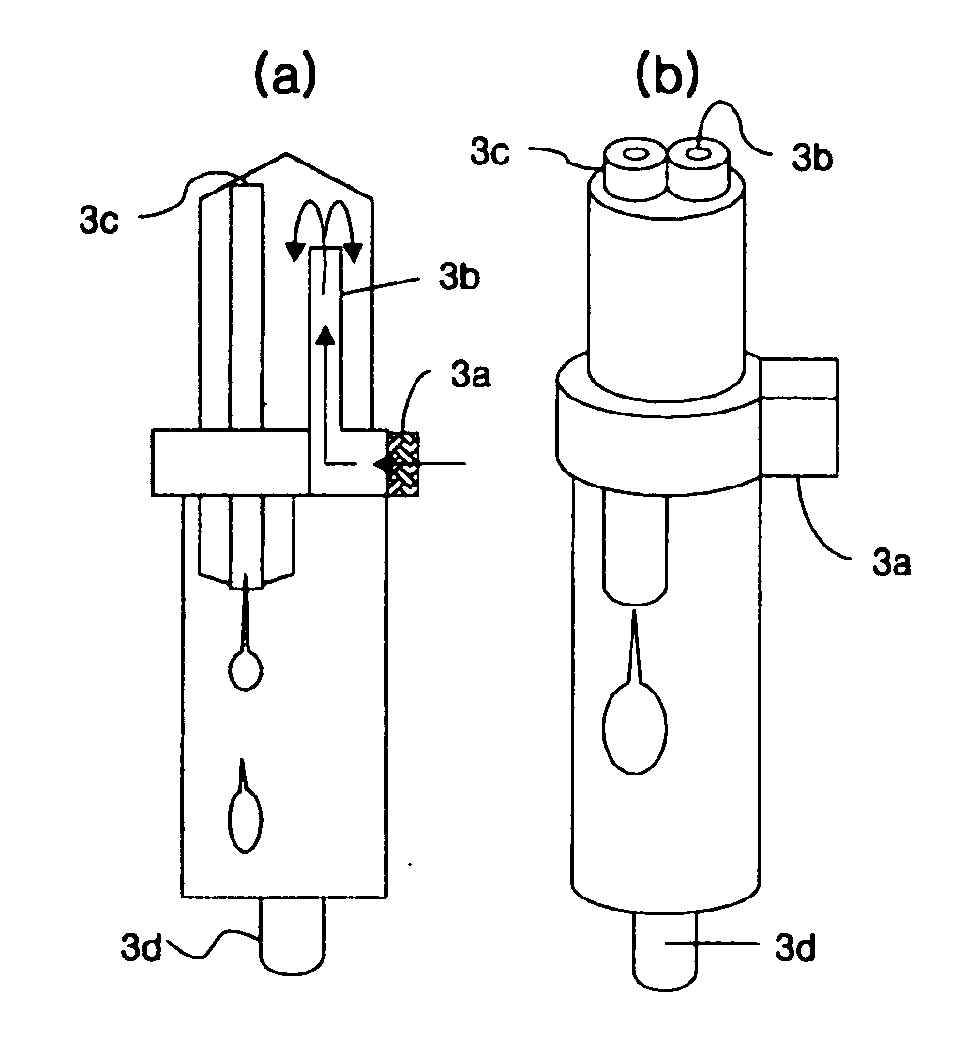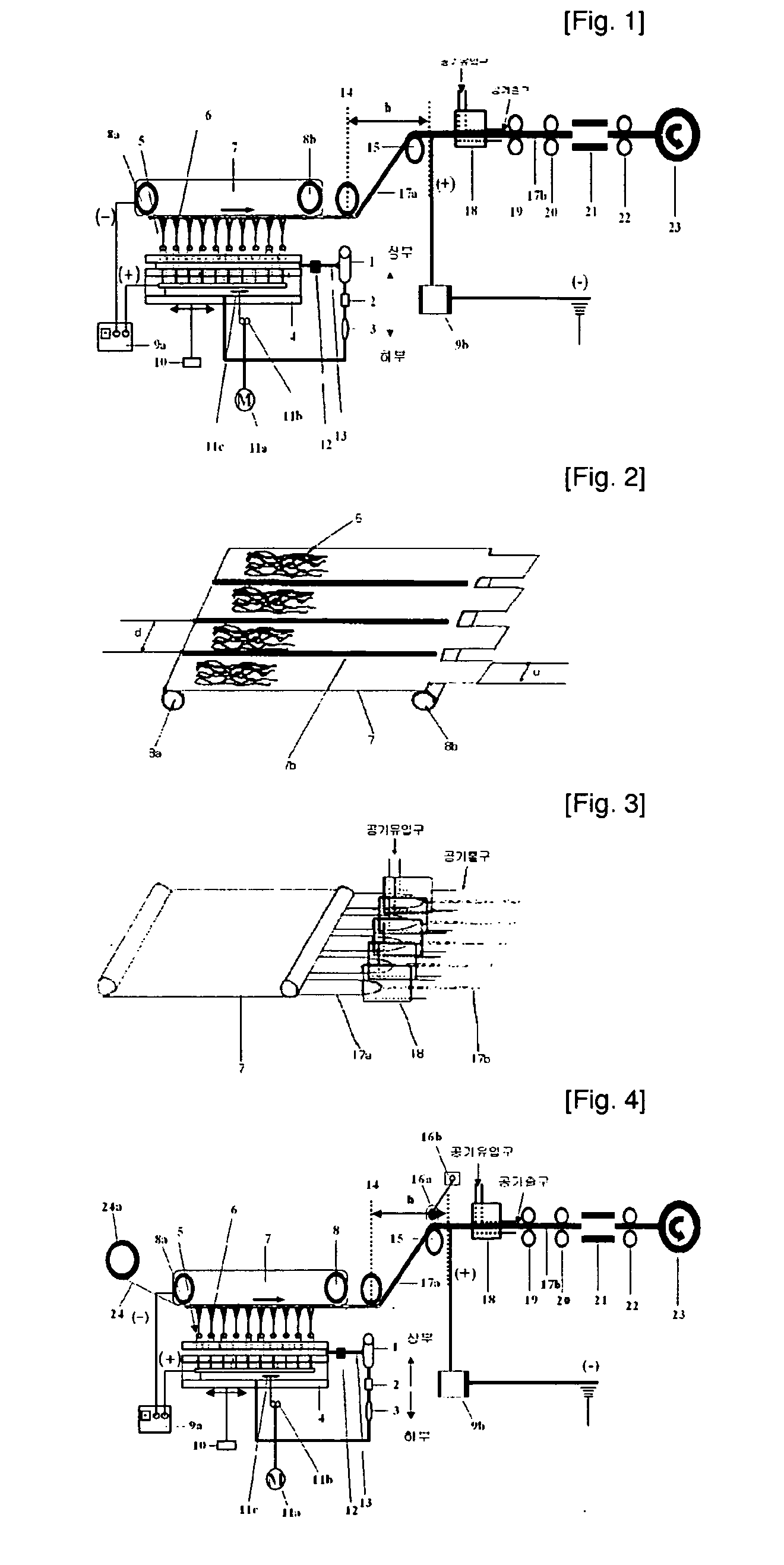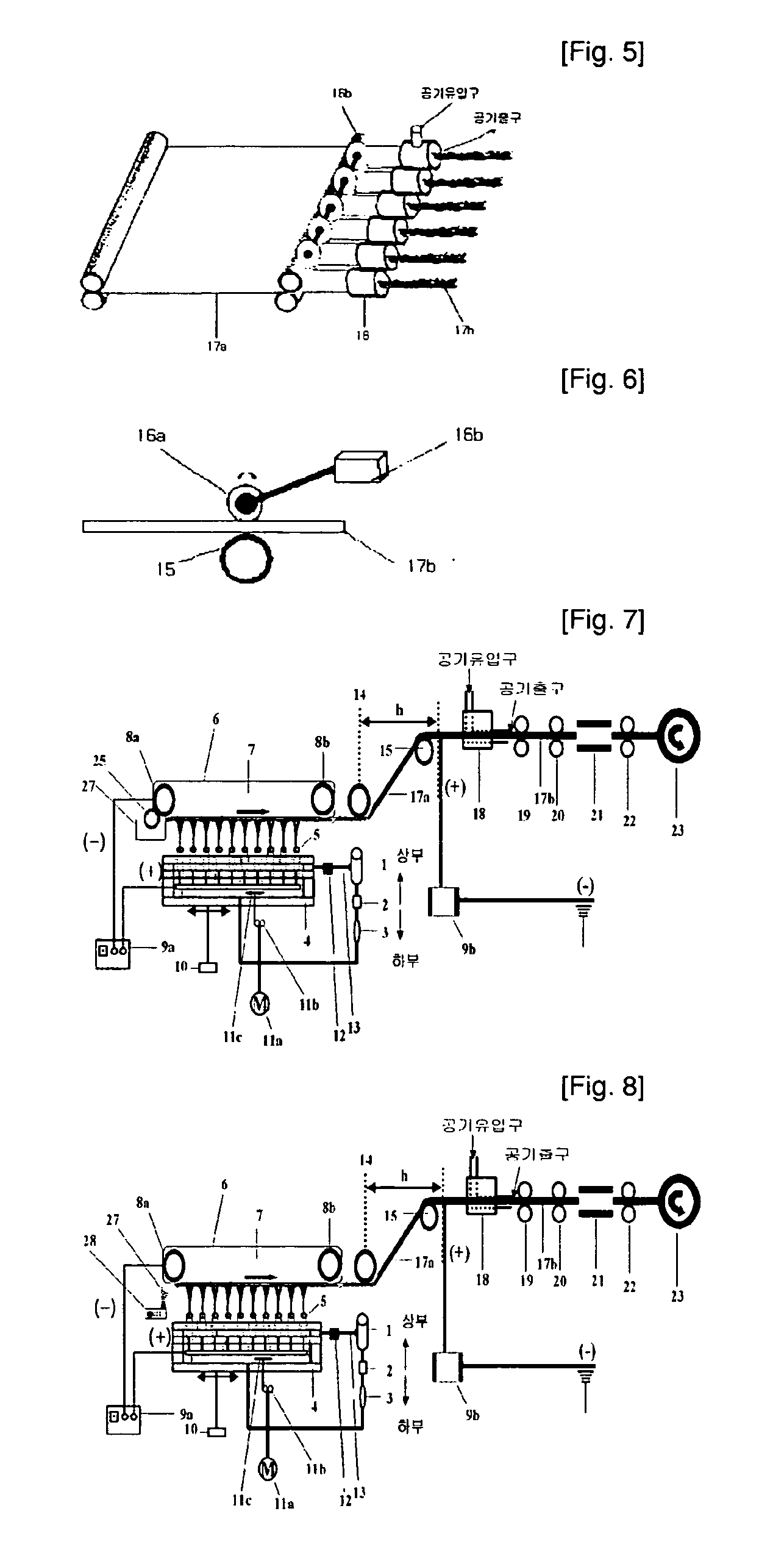Process of preparing continuous filament composed of nanofibers
a nanofiber and nanofiber technology, applied in the field of preparing a continuous filament or yarn, can solve the problems of inability to make fibers with a diameter less than 1,000 nm by using the above two methods, uneven dyeing, and complex artificial leather making process
- Summary
- Abstract
- Description
- Claims
- Application Information
AI Technical Summary
Benefits of technology
Problems solved by technology
Method used
Image
Examples
example 1
[0132]Poly(ε-caprolacton) polymer (manufactured by Aldrich, USA) with a number average molecular weight of 80,000 was dissolved in a mixed solvent of methylene chloride / N,N-dimethylformamide (volume ratio: 75 / 25) at a concentration of 13% by weight, to thereby obtain a polymer spinning liquid.
[0133]The surface tension of the polymer spinning liquid was 35 mN / m, the solution viscosity was 250 centipoises under a room temperature, the electric conductivity was 0.02 mS / m and permittivity constant was 90. The polymer spinning liquid was electrostatically spun to a collector 7 located on the top part through a nozzle block 4, with nozzles having a 1 mm diameter arranged thereto in a row, via a metering pump 2 as shown in FIG. 1, thereby making a nanofiber web with a unit width of 2.5 cm. At this time, as the nozzle block 4, used was a nozzle block which consists of ten unit nozzle blocks each having 80 nozzles arranged thereto in a row in a traveling direction of nanofibers and which has...
example 2
[0144]Polyurethane resin (manufactured by Daewoo International, Korea) with a number average molecular weight of 80,000 and polyvinyl chloride (LG Chemical, Korea) with a polymerization degree of 800 was dissolved in a mixed solvent of dimethylformamide / tetrahydrofuran (volume ratio: 5 / 5) at a weight ratio of 70 / 30, to thereby obtain a 12.5% by weight polymer spinning liquid. The viscosity of the spinning liquid was 450 centipoises.
[0145]The polymer spinning liquid was electrostatically spun to a collector 7 located on the top part through a nozzle block 4, with 400 nozzles having a 1 mm diameter diagonally arranged thereto, via a metering pump 2 as shown in FIG. 4, thereby making a wide nanofiber web with a 60 cm width.
[0146]At this time, the throughput rate per nozzle was 2.0 mg / min. In electrospinning, the nozzle block 4 was bilaterally reciprocated at a velocity of 2.5 m / min by using a nozzle block bilateral reciprocating device 10, and the collector 7 was heated at 85° C.
[0147]...
example 3
[0155]Nylon 6 resin having a relative viscosity of 3.2 was dissolved in formic acid at a concentration of 15% by weight to prepare a spinning liquid. The surface tension of the polymer spinning liquid was 49 mN / m, the solution viscosity was 1,150 centipoises under a room temperature, and the electric conductivity was 420 mS / m.
[0156]The polymer spinning liquid was electrostatically spun to a collector 7 located on the top part through a nozzle block 4, with nozzles having a 1 mm diameter arranged thereto in a row, via a metering pump 2 as shown in FIG. 1, thereby making a nanofiber web with a unit width of 1.8 cm.
[0157]At this time, as the nozzle block 4, used was a nozzle block which consists of ten unit nozzle blocks each having 100 nozzles arranged thereto in a row in a traveling direction of nanofibers and which has a total of 1000 nozzles. The throughput rate per nozzle was 1.2 mg / min.
[0158]Further, as the collector 7, used was a collector having barriers 7b of Teflon installed ...
PUM
| Property | Measurement | Unit |
|---|---|---|
| Width | aaaaa | aaaaa |
| Amphoteric | aaaaa | aaaaa |
| Velocity | aaaaa | aaaaa |
Abstract
Description
Claims
Application Information
 Login to View More
Login to View More - R&D
- Intellectual Property
- Life Sciences
- Materials
- Tech Scout
- Unparalleled Data Quality
- Higher Quality Content
- 60% Fewer Hallucinations
Browse by: Latest US Patents, China's latest patents, Technical Efficacy Thesaurus, Application Domain, Technology Topic, Popular Technical Reports.
© 2025 PatSnap. All rights reserved.Legal|Privacy policy|Modern Slavery Act Transparency Statement|Sitemap|About US| Contact US: help@patsnap.com



